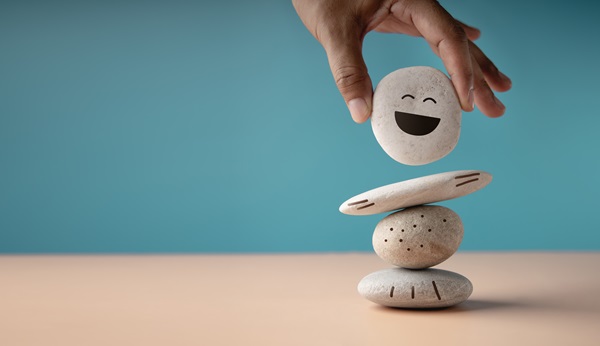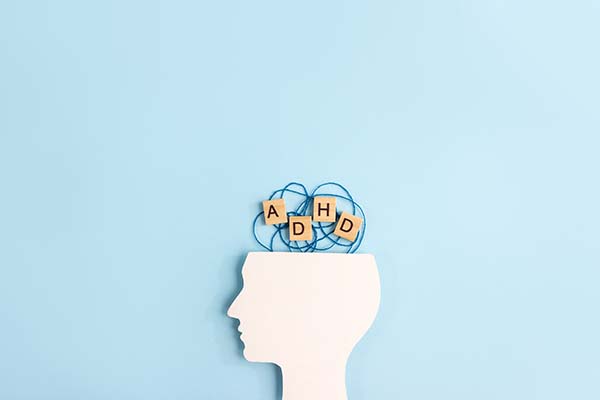Transcranial Magnetic Stimulation (TMS)Columbia, SC
Introduction to TMS
What is TMS?
Transcranial Magnetic Stimulation (TMS) is an FDA-approved, non-invasive treatment that uses magnetic pulses to stimulate nerve cells in the brain. It's primarily used to treat depression, particularly in cases where traditional treatments like medication and psychotherapy have been ineffective. TMS works by delivering repetitive alternating magnetic pulses, sometimes referred to as rTMS (repetitive Transcranial Magnetic Stimulation). It is appropriate for any patient who has tried and failed two adequate trials of antidepressants and has not had complete relief of their symptoms. At Future Psych Solutions, we have completed over 15,000 treatments and have seen significant improvement in patients whose medications have failed. Our experience in treatment delivery and a genuine nurturing environment has shown that over 70% of our TMS patients significantly improved, with over 40% reaching clinical remission. These results include minimal side effects in patients with tough-to-treat depression.
History and Development of TMS
TMS was developed in the 1980s and has since undergone extensive clinical trials. It was approved by the FDA in 2008 for the treatment of major depressive disorder. Over the years, the technology and methods have evolved, making TMS a more accessible and effective treatment option for patients with depression.
The Science Behind TMS
TMS works by targeting the prefrontal cortex (front area of the brain) of the brain, an area known to be underactive in people with depression. The magnetic pulses generated by the TMS device induce a small electric current. This current stimulates brain cells, leading to changes in brain activity associated with the area of the brain responsible for positive mood improvement. As in many areas of medical science, the exact mechanism is still the subject of ongoing research, but studies suggest that TMS can help reset the brain's neurochemistry, including the release of neurotransmitters like serotonin and dopamine. More specifically, TMS uses rapidly alternating, MRI-strength magnetic fields that generate an action potential (nerve cell firing). The left dorsolateral prefrontal cortex (left -DLPFC) is the target treatment area for Stimulating this area causes the nerve cells to fire repeatedly, releasing neurotransmitters, and training the cells to fire on their own. Increased neuronal firing is thought to encourage BDNF release and enhance neuroplasticity. This stimulation of the DLPFC also communicates with deeper structures in the brain that are thought to control the mood. The cingulate gyrus and the limbic system are indirectly affected by TMS
Looking at the fMRI scans of patients with depression who were being treated with TMS, researchers made maps of the visual signals to show more active and less active areas of the brain during TMS. This strategy allowed them to see that when magnetic pulses were applied to the DLPFC region, the cingulate gyrus of the limbic system became less active.
It was determined that the reason TMS and rTMS therapy for depression helped patients with depression was that there was a connection between the DLPFC on the surface of the brain and the deep brain structures. The brain’s structural connectivity allowed the pulses delivered to the DLPFC to be propagated to the limbic system . This suppression of activity in one region caused by the stimulation of another region of the brain is called anti-correlation.
TMS Patient Experience
“I was in an emergency situation and that staff was amazing! They understood and was so caring! Feeling a little more at ease know my I will be in good hands.
UPDATE: ONE year later and I have never been so mentally happy. I did TMS treatments and the staff was so amazing and with me the whole way! Lilly's, Sarah and Doc are truly gifts from God!”
Google Review
- Amanda T.
Check out what others are saying about our Transcranial Magnetic Stimulation services on BirdEye: Transcranial Magnetic Stimulation, Columbia
Understanding Depression
Definition and Symptoms
Depression is a common but serious mood disorder. It causes persistent feelings of sadness and loss of interest and can interfere significantly with daily life. Symptoms include changes in sleep, appetite, energy level, concentration, daily behavior, or self-esteem. Depression can also be associated with thoughts of suicide. Objective measures such as the PHQ-9, Beck Depression Inventory (BDI) HAM-D (Hamilton Rating Scale for Depression) can be used to monitor the severity of symptoms in a clinical setting.
Common Treatments for Depression
Traditional treatments for depression include medications (antidepressants) and psychotherapy. These treatments can be effective, but some patients may not respond adequately. This is known as treatment-resistant depression, where alternative treatments like TMS may be considered. One-third of all patients treated for depression do not respond to initial trials of antidepressants. Another third of these patients do not sustain lasting relief from antidepressants. Therefore, there is a large need for advanced treatments to manage depression. It is important to understand that even if you resolve symptoms with antidepressants the time to relapse is approximately < 4 months for most patients. TMS is appropriate for any patient who's failed two adequate rials of an antidepressant. An adequate trial is defined as taking an antidepressant up to the maximum dosage and staying on the medication for a minimum of 6 weeks. An alternate definition is the person who's tried an antidepressant but had to quit due to intolerable side effects.
Role of TMS in Treating Depression
TMS is particularly useful for patients who’s antidepressant have not achieved complete relief. As a non-invasive procedure with few side effects, TMS offers a safe alternative. Clinical studies have shown that TMS can lead to significant improvements in symptoms for many patients, particularly those with treatment-resistant depression.
The TMS Procedure
How TMS Works
During a TMS session, the patient is seated comfortably, and the device (magnetic coil) is placed near the head. The device generates focused magnetic pulses that stimulate the prefrontal cortex. More specifically, the treatment targets the left dorsolateral prefrontal cortex. It is thought that this region of the brain communicates with deeper structures in the brain that control mood. It is known that patients with depression have diminished cortical activity in the region of the left prefrontal cortex and other areas superficially in the cortex of the brain. However, during a depressive State deeper regions in the brain that control the mood such as the limbic system caudate nuclei, and nucleus accumbens tend to have increased activity during a depressive state. Typically, we use chemical Messengers activated by antidepressants to reach these deeper regions of the brain to treat depression. However, this does not always work. Oftentimes medications lead to intolerable side effects. With TMS, we indirectly get these mood regions to fire more normally and decrease their activity due to the reciprocal relationships between the left Prefrontal cortex and these deep regions of the brain.
Another way of stating this is that when people are depressed, the left prefrontal cortex (LPC) is very inactive. The Deep regions of the brain that control the mood tend to be more active than normal. These two regions counterbalance each other. When the left prefrontal cortex is stimulated repetitively over time, the LPC becomes more active and inversely the mood centers become less active. This profile is more congruent with a normal mood.
The TMS treatment is divided into several steps.
1) Medical clearance.
Medical clearance is necessary to gather and confirm the patient's physical and mental health history and to screen the patient for any contraindications for treatment. The objective is to verify that the patient is safe to move forward with the treatment. The visit also verifies that the patient meets the criteria for treatment to ensure that the treatment is covered by their insurance. This visit is used to educate the patient about the procedure and to address any questions the patient may have before starting.
2) Motor threshold visit.
The motor threshold visit is the first treatment session where the physician or authorized representative determines the prescription of the machine for the patient. The prescription includes the dose, the location, and the protocol entered into the TMS machine. This is determined by stimulating the motor strip on the brain to identify the right thumb. The right thumb on the motor strip correlates with where the left prefrontal cortex is. Locating this area is also necessary for determining the dose of stimulation. An adequate dose creates an action potential that will typically cause a finger twitch indicating that the dose was adequate to generate an action potential (nerve cell firing). After the prescription is determined the patient receives their first treatment on day one.
3) Daily treatments
The treatment course of TMS is 36 total treatments. The first treatment is the motor threshold visit, the subsequent 35 visits are considered daily treatments. The patient will return to the office 5 days a week for 6 weeks and then for the final three weeks they will be tapered down in a 3-2-1 fashion. Three treatments on week 7, two treatments on week 8, and one treatment on week 9. The TMS treater is responsible for greeting the patient, placing them in the TMS chair, positioning the treatment call to the location found at the motor threshold visit, and then rendering the treatment as prescribed by the physician. Typical treatment lasts 17 to 35 minutes depending on the patient and the protocol. Patients do not require anesthesia and they do not lose consciousness. The most common side effect of the treatment is discomfort at the treatment site.
4) Post-assessment
The post-assessment visit is used to evaluate the patient's results from the procedure. It is typically 3 to 4 weeks after completion of the series of treatments. The purpose is to evaluate the results and to make further recommendations based on the results or lack thereof in some cases. Many of these patients who reach remission likely won't need additional treatment from TMS but should be encouraged to continue their medication regimen until they have at least one year of stability. Patients who are partial responders may want to consider another treatment option such as IV Ketamine or Spravato to see if they can reach remission. For the patients who are non-responders, no further TMS is recommended but they may be appropriate for ketamine or Spravato. If all of those things have failed, typically we refer to ECT.
5) Optionally there is a mid-treatment reevaluation. Insurance allows for one redetermination of the motor threshold if the patient is not making progress at the halfway point. This is a billable service and reimburses nearly as much as the motor threshold initial session. Some clinics always do this Appointment however it is not always necessary for patients.
6) Maintenance treatments are not FDA-approved at this time and are a fee-for-service visits. Maintenance TMS treatments, also known as continuation TMS or cTMS, are designed to prevent relapse and maintain improvements in depressive symptoms over the longer term.
Research and Clinical Evidence:
Sustained Effects
Several studies have shown that the antidepressant effects of TMS can be sustained over time with maintenance sessions. These sessions may be scheduled weekly, monthly, or at other intervals based on individual patient needs and responses.
Randomized Controlled Trials:
Some randomized controlled trials have investigated the effectiveness of maintenance TMS treatments. These studies generally indicate that periodic TMS sessions can help patients maintain the benefits achieved from their initial treatment course.
Guidelines and Recommendations:
While specific guidelines for maintenance TMS treatments are still evolving, some professional organizations and clinical research support the practice. The decision to implement maintenance TMS is often based on clinical judgment, patient history of relapse, and individual response to the initial treatment.
Personalization of Treatment:
The frequency and duration of maintenance TMS sessions are highly individualized. Factors such as the severity of symptoms, duration of the initial response, and patient preference play significant roles in determining the maintenance regimen.
Clinical Outcomes:
Studies report varied outcomes, with many patients experiencing sustained remission or significant reduction in depressive symptoms. Maintenance TMS is particularly beneficial for patients with a history of recurrent depression or those who have shown a robust response to acute TMS treatment.
Conclusion:
Maintenance TMS treatments represent a promising approach for extending the benefits of TMS therapy and preventing relapse in patients with depression. While the evidence base is growing, further research is needed to optimize maintenance protocols, including the ideal frequency and duration of treatments. Clinicians should consider individual patient factors and clinical judgment when recommending maintenance TMS.
Equipment Used
Apollo TMS is a state-of-the-art device used in administering TMS therapy. It is designed for patient comfort and precision in delivering magnetic pulses.
Apollo TMS is a product of Neurocare. The Apollo device is ergonomically superior and utilizes a unique coil stabilization unit called HANS. The HANS (Head-And-Neck-Support) positioning system ensures that reproducibly stimulating the correct treatment spot by following head movement. Apollo s FDA-cleared for rTMS.
Apollo uses a unique coating cooling system to cool the coil between sessions. This makes the coil very quiet. Apollo has the shortest pulse width of any TMS device. The narrower the pulse width, the more potentiating it can be from the neurobiology standpoint.
Patient Eligibility for TMS
All individuals who have tried and failed two antidepressants at a maximum dose and a duration of at least 6 weeks are often eligible through their insurance. Alternatively if you've tried two antidepressants and had to stop due to the side effects you also may be eligible. Some insurances will require an augmentation strategy i.e. a trial of an antipsychotic and therapy before it becomes a covered service. If you think you've met these criteria please contact us for a consultation.
Benefits of TMS
Effectiveness in Treating Depression
TMS has been proven effective in treating major depressive disorder, particularly in cases where traditional treatments have failed. Clinical studies have shown that TMS can lead to significant improvement in depressive symptoms.
Comparisons with Other Treatments
Unlike medication, TMS does not have systemic side effects like weight gain, sexual dysfunction, or gastrointestinal problems. It's a preferred option for patients who are sensitive to medication side effects or for whom medications have been ineffective.
Side Effects and Safety
TMS is generally well-tolerated. The most common side effect is discomfort at or near the treatment site during the session. This typically subsides after the first week of treatment. TMS has a very low risk of seizures and does not require sedation, making it a safe option for most patients.





